Home>Garden Essentials>Garden Storage>Courtyard Garden Ideas: 18 Ways Transform An Enclosed Space
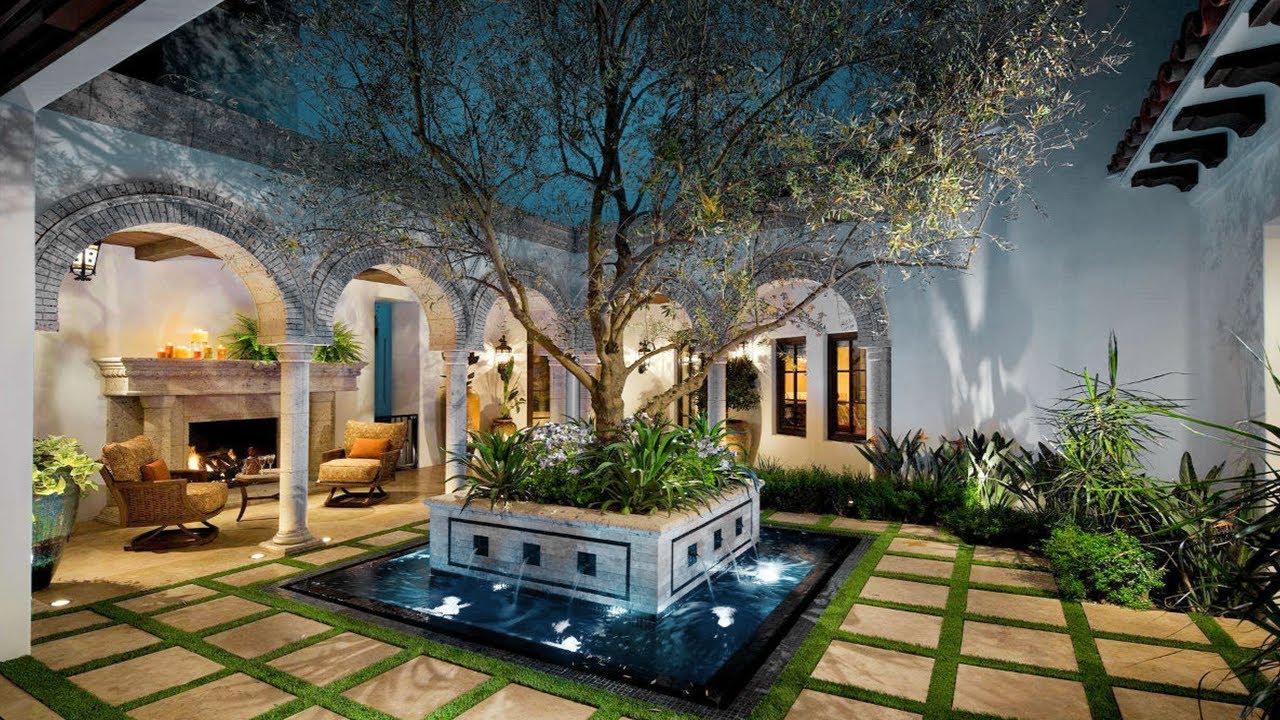

Garden Storage
Courtyard Garden Ideas: 18 Ways Transform An Enclosed Space
Modified: January 23, 2024
Looking for courtyard garden ideas? Discover 18 creative ways to transform your enclosed space, including clever storage solutions
(Many of the links in this article redirect to a specific reviewed product. Your purchase of these products through affiliate links helps to generate commission for Storables.com, at no extra cost. Learn more)
Introduction
Welcome to the world of courtyard gardens! These enclosed spaces provide a serene sanctuary amidst the hustle and bustle of city life. Whether you have a small balcony or a spacious patio, transforming your courtyard into a beautiful and functional garden is a delightful endeavor.
A well-designed courtyard garden can offer a multitude of benefits, from creating a peaceful retreat to adding visual interest and increasing property value. With a little creativity and some green thumb know-how, you can transform your courtyard into an oasis of beauty and tranquility.
In this article, we will explore 18 inspiring ideas to help you make the most of your courtyard garden. From vertical gardening to outdoor seating areas, we’ve got you covered with plenty of options to suit your style and space.
So, grab your gardening gloves and let’s dive in!
Key Takeaways:
- Transform your courtyard into a lush oasis with vertical gardening, container gardening, and hanging plants. Create a serene and vibrant space that reflects your personality and connects you with nature.
- Elevate your outdoor living experience with features like potted trees, water features, and outdoor kitchens. Embrace creativity, functionality, and personal touches to make your courtyard a captivating haven.
Vertical Gardening
Vertical gardening is a fantastic way to maximize your space and create a lush and vibrant courtyard garden. By utilizing vertical surfaces such as walls, fences, and trellises, you can add a stunning vertical element to your garden.
There are several options for vertical gardening, from hanging planters to living walls. Hanging planters are an easy and versatile solution, allowing you to grow a variety of plants without taking up valuable floor space. You can hang them from hooks or install a trellis system on a wall to support climbing plants.
Living walls, also known as green walls, are an eye-catching feature that can turn your courtyard into a living work of art. These structures are created by attaching specially designed systems to the walls and filling them with a variety of plants. Not only do green walls add beauty to your courtyard, but they also provide numerous environmental benefits, including improving air quality and reducing noise pollution.
When choosing plants for vertical gardening, consider their light and water requirements. Opt for plants that thrive in the conditions of your courtyard. You can mix and match different plants to create a visually stunning display with a variety of textures and colors.
Vertical gardening opens up endless possibilities for creativity and experimentation. Whether you choose to hang a few planters or create a lush green wall, this technique is sure to take your courtyard garden to new heights.
Don’t let your limited space hold you back—think vertical and watch your courtyard transform into a green oasis!
Container Gardening
Container gardening is a versatile and practical option for courtyard gardens of all sizes. It allows you to grow a variety of plants in containers, making it easy to rearrange and adapt your garden as needed.
One of the benefits of container gardening is its flexibility. You can choose containers of different sizes, shapes, and materials to suit your style and space. From traditional terracotta pots to modern fiberglass planters, the options are endless.
When selecting containers, ensure they have proper drainage to prevent waterlogging and root rot. You can add a layer of gravel or small stones at the bottom of the pot to improve drainage. Additionally, consider the size of the plant when choosing a container. Allow enough space for the plant’s roots to grow and spread.
Container gardening opens up a world of possibilities when it comes to plant selection. From colorful annual flowers to fresh herbs and even small fruit trees, you can create a diverse and vibrant garden right on your doorstep.
Grouping containers together can create visual interest and a sense of cohesion in your courtyard garden. Experiment with different combinations of plant types, heights, and colors to create a visually appealing arrangement.
Container gardening also offers the advantage of easy maintenance. With plants in containers, you have better control over soil quality, watering, and fertilizing. You can rearrange your containers as needed to optimize sun exposure or to protect sensitive plants from harsh weather conditions.
Get creative with your container choices, too. Repurpose vintage buckets, wooden crates, or even old pallets to add a touch of character and uniqueness to your courtyard garden.
With container gardening, you can bring your courtyard to life with an array of vibrant plants, regardless of the available space. It’s a fantastic option for both novice and experienced gardeners to create a stunning and functional garden.
Hanging Plants
Hanging plants are a fabulous way to add vertical interest and visual appeal to your courtyard garden. They bring a touch of lushness and greenery to any space, whether you have a small balcony or a spacious patio.
There are numerous options for hanging plants, ranging from cascading vines to colorful flowering varieties. Hanging plant baskets are a popular choice, as they allow you to showcase a mix of different plants in one hanging arrangement.
When selecting hanging plants, consider the light conditions of your courtyard. Some plants thrive in bright, direct sunlight, while others prefer shadier spots. Choose plants that are suited to your specific lighting conditions and ensure they are compatible with the size of your hanging baskets or containers.
Popular choices for hanging plants include trailing varieties such as pothos, ferns, spider plants, and ivy. These plants have cascading stems that gracefully spill over the edges of their containers, creating a stunning visual effect.
To hang your plants, you can use hooks or install a hanging plant system from the ceiling or walls of your courtyard. Be sure to securely fasten the hooks or brackets to ensure the safety of your plants.
Another creative option for hanging plants is to create a living wall by planting them in a vertical planting system. This allows you to make the most of your vertical space and create a striking green display.
Hanging plants not only add beauty to your courtyard, but they also have several benefits. They can help purify the air, reduce stress levels, and improve overall well-being. Plus, they don’t take up valuable floor space, making them perfect for smaller courtyards.
Enhance your courtyard garden with the beauty and charm of hanging plants. They will bring a touch of nature and a delightful sense of tranquility to your outdoor space.
Herb Garden
A herb garden in your courtyard is not only visually appealing but also incredibly practical. It allows you to have easy access to fresh herbs for cooking, while also adding a delightful fragrance to your outdoor space.
Herbs are versatile plants that can be grown in various ways, from traditional garden beds to containers or even vertical gardens. Regardless of the size of your courtyard, there’s always room for a herb garden.
When planning your herb garden, consider the specific herbs you want to grow and their individual requirements. Some herbs, like basil and parsley, thrive in full sun, while others, like mint and chives, prefer partial shade.
If you have limited space, consider growing herbs in containers. Choose pots that are wide enough to accommodate the herbs’ roots and have proper drainage holes. You can place the pots on a sunny windowsill, hang them from hooks, or arrange them on a dedicated herb shelf or ladder.
Vertical herb gardens are also a popular option, especially if you have a wall or trellis available. Attach small planters or vertical garden systems to the wall and plant your herbs in them. Not only does this save space, but it also adds a unique and eye-catching element to your courtyard.
Some herbs, such as mint, can be invasive and may take over the garden if not properly contained. To prevent this, consider planting them in separate containers or use barriers such as plastic pots sunk into the ground to control their growth.
The beauty of a herb garden lies not only in its practicality but also in the variety of scents and flavors it brings. Imagine stepping outside your door and picking fresh basil for a homemade pizza or harvesting rosemary for a delicious roasted chicken.
Whether you’re an avid cook or simply enjoy the aromas of fresh herbs, a courtyard herb garden is a wonderful addition to any outdoor space.
Flower Garden
A flower garden brings color, fragrance, and beauty to your courtyard, creating a vibrant and inviting atmosphere. Whether you prefer a formal arrangement or a more casual wildflower garden, there are endless possibilities to suit your style and preferences.
Before starting your flower garden, consider the sunlight and soil conditions of your courtyard. Some flowers thrive in full sun, while others prefer partial shade. Choose flowers that are well-suited to the specific conditions of your space.
When designing your flower garden, think about the overall layout and color scheme. You can opt for a monochromatic scheme, using different shades of a single color for a sophisticated look. Alternatively, you can create a vibrant and diverse display by combining contrasting colors and varieties.
To add visual interest and structure to your flower garden, consider incorporating different heights and textures. Tall flowers such as sunflowers or hollyhocks can provide a focal point, while shorter and compact flowers like marigolds or petunias can be used to fill in the gaps.
Grouping flowers with similar needs together can make maintenance and watering more efficient. Additionally, consider adding some native plants to attract pollinators and support local ecosystems.
For a low-maintenance option, consider planting perennial flowers that come back year after year, reducing the need for replanting. Some popular perennial flowers include lavender, peonies, and coneflowers.
Flower gardens can be created in garden beds or containers, depending on the available space in your courtyard. Raised garden beds can add structure and allow for easier maintenance. On the other hand, container gardens offer flexibility and can be rearranged to suit your preferences.
Adding mulch to your flower garden can help conserve moisture and prevent weeds from taking over. Layer a few inches of mulch around your flowers, leaving a gap around the stem to prevent rot.
A flower garden not only adds visual beauty to your courtyard but also attracts pollinators such as butterflies and bees. It creates a vibrant and lively atmosphere, perfect for enjoying the outdoors and connecting with nature.
Bring your courtyard to life with a stunning flower garden and indulge in the beauty and delight that it brings.
Potted Trees
Adding potted trees to your courtyard can create a sense of height, shade, and tranquility. These elegant additions not only enhance the aesthetics of your outdoor space but also offer several other benefits.
When selecting trees for your courtyard, consider the size and growth habits of the tree as well as the available space. Opt for trees that are suitable for container planting and won’t outgrow the space. Some popular choices for potted trees include citrus trees, Japanese maples, and dwarf varieties of fruit trees.
The size of the container is important when growing potted trees. Choose containers that are large enough to accommodate the tree’s roots and provide enough space for growth. Ensure the container has proper drainage to avoid waterlogged soil. You might need to periodically repot the tree as it grows to prevent rootbound issues.
Place your potted trees strategically in your courtyard to create shade or focal points. They can be placed near seating areas to provide a cool and relaxing atmosphere on hot summer days. You can also position them at different heights to add visual interest to the space.
Caring for potted trees involves regular watering, fertilizing, and pruning. Pay attention to the specific needs of the tree you choose, including sunlight requirements and maintenance practices. Be mindful of the changing seasons and adjust your care routine accordingly.
Potted trees offer the advantage of mobility. You can move them around your courtyard to optimize sunlight exposure or create different seating arrangements as needed. This flexibility allows you to experiment with different layouts and create an ever-changing and dynamic outdoor space.
In addition to their aesthetic appeal, potted trees contribute to a healthier environment. They help purify the air by absorbing carbon dioxide and releasing oxygen. They can also provide a habitat for birds and other small wildlife, adding an element of natural biodiversity to your courtyard.
Enjoy the beauty and serenity that potted trees bring to your courtyard. Their graceful presence will transform your outdoor space into a peaceful and refreshing retreat.
Outdoor Seating Area
An outdoor seating area is an essential element of any courtyard garden, providing a comfortable and inviting space to relax, entertain, and enjoy the beauty of your surroundings. Whether you have a small balcony or a spacious patio, creating a well-designed seating area will enhance the functionality and enjoyment of your outdoor space.
When designing your outdoor seating area, consider the available space and the desired ambiance. Determine the size and shape of furniture that will fit comfortably without overcrowding the space. Opt for weather-resistant materials such as teak, aluminum, or durable synthetic wicker to withstand the elements.
Choose furniture that reflects your personal style and complements the overall theme of your courtyard garden. From sleek modern designs to cozy rustic pieces, there are countless options available to suit your taste. Cushions and pillows in vibrant colors or patterns can add a touch of personality and comfort to your seating area.
Consider the layout of your seating area and how it will flow with the rest of the courtyard. Arrange the furniture in a way that encourages conversation or frames a focal point, such as a fountain or garden sculpture. Create a sense of intimacy by using tall potted plants or trellises as natural screens.
Add shade to your seating area by incorporating a pergola, umbrella, or retractable awning. This will provide relief from the sun and create a cozy and comfortable atmosphere. Alternatively, you can use shade-sail fabrics or a canopy system to create a unique and stylish shade solution.
Accessorize your outdoor seating area with thoughtful touches such as side tables for drinks and snacks, outdoor rugs for added comfort and style, and decorative lighting for cozy evenings. You can also add a fire pit or a portable outdoor heater to extend the usability of your seating area into the cooler months.
Don’t forget to surround your seating area with greenery and flowers to create a lush and inviting environment. Potted plants, hanging baskets, and flower beds can add a refreshing and colorful backdrop.
An outdoor seating area serves as a retreat where you can unwind, entertain guests, and enjoy the beauty of your courtyard garden. It is an extension of your indoor living space and provides a perfect setting to create lasting memories with family and friends.
Design your outdoor seating area with care, and let it become the heart of your courtyard garden—an oasis where you can relax and revel in the splendor of nature.
Water Feature
A water feature can be a captivating focal point in your courtyard garden, adding a sense of tranquility and creating a serene ambiance. The sound of flowing water can soothe the soul and enhance the overall sensory experience of your outdoor space.
There are various options to choose from when it comes to water features, depending on your space and personal preferences. Here are a few popular choices:
Fountains: Fountains come in a variety of sizes and styles, from grand cascading designs to small tabletop options. They can be made of stone, ceramic, or resin, and can be standalone features or integrated into existing structures. The soothing sound of water trickling or bubbling from a fountain adds a touch of elegance and tranquility to your courtyard.
Ponds: If you have a larger courtyard, consider incorporating a pond. Ponds can be home to aquatic plants and fish, creating a vibrant and dynamic ecosystem within your garden. They can be adorned with water lilies, floating plants, and decorative rocks to enhance their natural beauty.
Waterfalls: A waterfall is a dramatic and eye-catching water feature that can create a stunning focal point. It can be incorporated into a wall or cascade down rocks, creating a mesmerizing display of flowing water. The sound of a cascading waterfall adds a sense of tranquility and masks any unwanted noise from the surroundings.
When integrating a water feature into your courtyard, consider its placement and scale. Determine the appropriate size based on the available space and make sure it complements the overall design of your garden. Seek professional advice if necessary to ensure proper installation and maintenance.
Position your water feature in a central location where it can be easily enjoyed and admired. Arrange seating around it to create a peaceful and relaxing area for contemplation and reflection.
Water features require proper maintenance to keep them clean and functioning effectively. Regularly clean out debris, replace water as needed, and check pumps or filters for optimal performance. Treat the water to prevent algae growth and maintain water clarity.
Lighting can add a magical touch to your water feature, especially for evening enjoyment. Install underwater lights or spotlight the flowing water to create a captivating visual effect.
A water feature can transform your courtyard into a tranquil oasis, providing a serene and calming atmosphere. It invites you to pause, relax, and connect with nature, making it a beloved addition to any garden.
Read more: Cheap Ways To Enclose A Porch
Outdoor Lighting
Outdoor lighting is a crucial element in creating a welcoming and enchanting ambiance in your courtyard garden. It not only extends the usability of your outdoor space into the evening, but it also adds a touch of magic and highlights the beauty of your garden features.
When planning your outdoor lighting, consider both functional and aesthetic aspects. Choose lighting fixtures that are weather-resistant and suitable for outdoor use. Common options include path lights, spotlights, string lights, lanterns, and wall sconces.
Path lights are essential for illuminating walkways and guiding guests through your courtyard. They come in a variety of styles and heights to suit your design preferences. Place them strategically along pathways, creating a safe and well-lit environment.
Spotlights can be used to highlight specific garden features such as trees, shrubs, or sculptures. They add drama and create focal points, drawing attention to the beauty of your landscape. Experiment with different angles and intensities to achieve the desired effect.
String lights are a popular choice for creating a cozy and magical atmosphere. They can be draped along fences, hung between trees, or strung across your seating area. The soft and warm glow of string lights adds a beautiful and inviting feel to your courtyard.
Lanterns and wall sconces offer a charming and classic lighting option. They can be installed on walls, fences, or posts to provide a soft and warm illumination. Choose lanterns that match the style of your courtyard and consider using LED candles for a safe and flickering effect.
Consider installing a dimmer switch for your outdoor lighting to adjust the brightness level when desired. This allows you to create different moods and adapt the lighting to different occasions.
Additionally, solar-powered lights are an eco-friendly option that recharges during the day and automatically illuminates your outdoor space at night. They are easy to install and require minimal maintenance.
When placing your outdoor lighting, pay attention to both functional and aesthetics aspects. Illuminate key areas such as seating areas, cooking spaces, and paths for safety and convenience. Additionally, experiment with lighting techniques to add depth and create a captivating visual effect.
Outdoor lighting is not only practical but also has the power to transform the atmosphere of your courtyard garden. It adds a layer of charm and enchantment, allowing you to continue enjoying the beauty of your outdoor space long after the sun sets.
Consider using vertical gardening techniques to maximize space in a courtyard garden. Hang planters on walls, use trellises for climbing plants, and incorporate hanging baskets to add greenery without taking up valuable floor space.
Privacy Screening
Privacy screening is an essential aspect of creating a cozy, secluded, and intimate atmosphere in your courtyard garden. Whether you live in a bustling urban area or simply desire a sense of privacy, there are various creative options to shield your outdoor space from prying eyes.
The first step in creating privacy screening is to assess the existing layout of your courtyard. Identify areas that require privacy, such as seating areas, dining spaces, or relaxation zones. Take note of the sightlines from neighboring properties or busy streets.
One effective method of privacy screening is by using plants, such as tall hedges or strategically placed trees. These green barriers act as natural screens and provide an attractive and lush backdrop for your garden. Evergreen plants, such as arborvitae or bamboo, are great choices as they provide year-round privacy.
If you have limited space, consider using trellises, pergolas, or lattice panels as privacy screens. These structures offer support for climbing plants such as vines or ivy, softening the appearance while adding a touch of greenery and privacy.
Another option for privacy screening is the use of decorative screens or fencing. These can be made from various materials such as wood, metal, or even bamboo. Choose a design that complements your courtyard’s overall aesthetic. Alternatively, you can create a sense of privacy with fabric curtains or shades that can be drawn as needed. These can be attached to pergolas, umbrellas, or other structures.
For a more modern and contemporary look, consider utilizing glass panels or partitions. These provide privacy while still allowing natural light to pass through, creating an open and airy atmosphere.
Combining multiple privacy screening methods can result in a unique and layered effect. For example, you can use a combination of tall hedges, trellises, and decorative screens to create different levels of privacy in various areas of your courtyard garden.
Lighting can also play a role in privacy screening. Well-placed outdoor lighting can create a cozy and intimate ambiance while simultaneously obscuring the view from outside.
Remember to check local building codes and regulations before installing any permanent privacy screening structures. It’s important to ensure compliance and obtain any necessary permits.
With the right privacy screening techniques, you can create a serene and sheltered retreat within your courtyard garden, allowing you to fully enjoy your outdoor space with a sense of peace and tranquility.
Trellis and Climbing Plants
Trellises and climbing plants are a delightful combination that can add vertical interest and beauty to your courtyard garden. Whether you want to enhance privacy, create a focal point, or maximize space, this dynamic duo is a winning choice.
A trellis is a framework made of wood, metal, or other materials that supports and guides climbing plants as they grow. It can be freestanding or attached to a wall or fence. A trellis provides a structure for plants to cling onto and helps to create a lush and visually appealing vertical garden.
When selecting a trellis, consider the desired height, shape, and style that will complement the overall aesthetic of your courtyard. Popular trellis designs include lattice, fan, or arched patterns. Opt for a sturdy and weather-resistant material to ensure its durability.
Once you have chosen your trellis, it’s time to select the climbing plants that will adorn it. There are countless options available, each with its own unique charm. Some popular choices include climbing roses, clematis, morning glories, passionflowers, and jasmine.
When planting climbing plants, ensure they are positioned near the trellis and have enough room to spread their roots. Provide initial support through ties or clips until they establish themselves on the trellis. Regular pruning and training may be necessary to guide the plants along the structure and maintain their desired shape.
Trellises and climbing plants serve various purposes in a courtyard garden. They can provide privacy by creating a living screen that shields your outdoor space from prying eyes. They can also be used to divide different areas within your garden, such as separating a dining area from a relaxation space.
Another advantage of trellises and climbing plants is their space-saving nature. If you have a small courtyard, utilizing vertical space allows you to grow more plants without encroaching on valuable floor space.
In addition to their practical benefits, trellises and climbing plants add charm and visual interest to your courtyard garden. The intertwining foliage, vibrant flowers, and sweet scents create an enchanting atmosphere that captivates the senses.
Experiment with different combinations of trellises and climbing plants to create unique and stunning displays. You can even combine multiple trellises of various heights and styles for a multi-dimensional effect.
Embrace the beauty and versatility of trellises and climbing plants, and watch as your courtyard garden transforms into a captivating vertical paradise.
Garden Sculptures
Garden sculptures are artistic elements that can add a touch of elegance, charm, and personality to your courtyard garden. They serve as focal points, captivating the eye and enhancing the overall visual appeal of your outdoor space.
When choosing garden sculptures, consider your personal taste and the theme or style of your courtyard. Opt for sculptures that resonate with you and complement the overall design aesthetic.
There is a wide variety of garden sculptures to choose from, ranging from abstract and contemporary pieces to traditional and figurative sculptures. Some popular options include statues, abstract art, animal sculptures, and geometric shapes.
Statues can be a classic choice, adding a timeless and elegant touch to your garden. They can depict humans, animals, or mythological creatures, depending on your preference. Stone or bronze statues are popular due to their durability and ability to withstand outdoor elements.
Abstract art sculptures offer a more contemporary and modern touch to your courtyard garden. These sculptures can be made from a range of materials, such as metal, glass, or recycled materials. They can add a unique and artistic element, sparking imagination and conversation.
Animal sculptures bring a sense of whimsy and nature-inspired charm to your garden. From playful birds and gentle rabbits to majestic lions or sculptures that mimic fish and dolphins, these creations bring a sense of life and personality to your outdoor space.
Geometric sculptures offer a sleek and modern aesthetic. With clean lines and precise shapes, they add an element of structure and sophistication. These sculptures work well in contemporary and minimalist gardens.
When placing garden sculptures, consider the scale, proportion, and overall balance of your courtyard garden. Find spots where they can be showcased, such as near plant beds, along pathways, or as a centerpiece in a seating area.
Lighting can further enhance the beauty of your garden sculptures. Install spotlights or uplights to illuminate them at night, creating a dramatic and enchanting effect.
Remember to periodically clean and maintain your garden sculptures to keep them looking their best. Use appropriate cleaning methods and materials based on the specific material of the sculpture.
By adding garden sculptures, you infuse your courtyard with artistic expression and transform it into a truly unique and personal outdoor haven. Let these sculptures become a reflection of your taste and a statement of your creativity.
Garden Pathways
Garden pathways are not only functional elements but also contribute to the overall beauty and charm of your courtyard. They guide visitors through your garden, create a sense of flow, and invite exploration. Designing well-planned pathways adds structure and visual interest to your outdoor space.
When designing garden pathways, consider the size and scale of your courtyard as well as the overall style and theme. Pathways can be made from various materials, each offering a distinct look and feel.
A classic and timeless option is a stone pathway. Natural stones, such as flagstone or slate, create an elegant and rustic aesthetic. They blend seamlessly into the surrounding nature and provide a durable surface.
Brick or paver pathways offer a more structured and uniform look. They can be arranged in a variety of patterns, such as herringbone or basketweave, to add visual interest. Bricks and pavers come in different colors and textures, allowing you to customize the pathway to fit your design preferences.
Gravel pathways provide a casual and relaxed vibe. They are easy to install and can be a cost-effective option for larger courtyards. Keep in mind that regular maintenance is required to prevent weeds from sprouting and to ensure the pathway’s evenness.
A wooden pathway adds warmth and a natural appeal to your courtyard. Constructed from wooden boards or logs, this type of pathway works well in gardens with a rustic or woodland theme. However, it may require more maintenance to ensure durability.
When planning the layout of your pathways, consider their purpose and functionality. Connect different areas of your courtyard, such as the seating area, flower beds, or water feature, with clear and direct paths. Curved or meandering pathways create a sense of intrigue and discovery.
Enhance the visual appeal of your pathways by surrounding them with beautiful plants and flowers. Use low-growing ground covers, such as thyme or creeping Jenny, to soften the edges and create a seamless transition between the pathway and the surrounding garden.
Additionally, consider adding lighting along your pathways to create a magical ambience in the evening. Solar-powered lights or LED fixtures can illuminate the way and add a touch of romance and safety.
Ensure that your pathways are well-maintained by regularly removing debris, trimming plants, and repairing any damage. This not only keeps your courtyard looking its best but also ensures a safe and comfortable passage for you and your guests.
Garden pathways are the backbone of your courtyard garden, guiding you and your visitors on a beautiful journey through your green oasis. They provide structure, enhance the aesthetics, and allow you to fully appreciate the beauty of your outdoor space.
Outdoor Artwork
Outdoor artwork adds a unique and personal touch to your courtyard, infusing it with creativity and individuality. Whether you appreciate sculptures, murals, or installations, incorporating outdoor artwork creates a visually captivating and inspiring atmosphere.
When selecting outdoor artwork for your courtyard, consider your personal taste and the overall design aesthetic. Artwork can be a reflection of your style, values, or personal experiences.
Sculptures are a popular choice for outdoor artwork. They come in various materials, such as metal, stone, or wood. From abstract shapes to figurative forms, sculptures can serve as focal points or integrate seamlessly into the natural landscape of your courtyard. Choose a sculpture that resonates with you and enhances the character of your outdoor space.
Another option for outdoor artwork is murals or wall art. Transform blank walls or fences into vibrant and eye-catching canvases. Hire a local artist to create a mural that tells a story or captures the essence of your courtyard. Alternatively, you can create your own artwork or opt for pre-made outdoor wall decals or paintings.
Installations are another exciting way to incorporate outdoor artwork. These temporary or permanent installations can be interactive, thought-provoking, or whimsical. They can be made from a wide range of materials, including recycled or repurposed items. Installations add an element of surprise and dynamic energy to your courtyard.
Consider the placement of your outdoor artwork for maximum impact. Place sculptures or installations in strategic locations to create focal points or guide the flow of movement. Murals or wall art can be positioned to complement seating areas or draw the eye to specific areas of interest.
Outdoor lighting plays a crucial role in illuminating your artwork. Use spotlights or uplights to highlight sculptures or installations, creating dramatic shadows and enhancing their presence at night. You can also incorporate LED lights or string lights to illuminate murals and create a captivating nighttime display.
Remember to protect your outdoor artwork from the elements. Choose materials that can withstand weather conditions, such as UV resistant paints or durable outdoor sculptures. Regular maintenance, including cleaning and sealing, can help prolong the life and beauty of your artwork.
Outdoor artwork adds personality, depth, and a distinct character to your courtyard. It creates a conversation piece and encourages contemplation and reflection. Embrace the opportunity to showcase your creativity and transform your outdoor space into a gallery of artistic expression.
Bird Feeders and Baths
Bird feeders and baths are delightful additions to your courtyard garden, attracting a variety of beautiful birds and adding a sense of vitality and liveliness to your outdoor space. They offer an opportunity to observe and connect with nature while providing essential resources for our feathered friends.
When selecting bird feeders and baths, consider the types of birds native to your area and their feeding preferences. Different bird species have different dietary needs, so offering a variety of foods can attract a diverse range of birds.
Bird feeders come in various styles, such as platform feeders, tube feeders, or suet feeders. Platform feeders are versatile and can accommodate different types of bird seeds or fruits. Tube feeders are designed to dispense smaller seeds and are ideal for finches and smaller birds. Suet feeders provide high-energy suet blocks that attract woodpeckers and other birds that enjoy insect-based foods.
Place your bird feeders in a visible and accessible location in your courtyard. Consider hanging them from trees or attaching them to poles or posts. Ensure that the feeders are sheltered from strong winds and predators while still allowing easy access for the birds.
In addition to bird feeders, providing a bird bath is essential for birds to drink and bathe, maintaining their feathers’ cleanliness and health. The bird bath should be shallow and have a rough surface for birds to grip. Consider adding pebbles or rocks to the bath to provide a variety of water depths.
Place the bird bath in an open and safe area, away from potential predators. To prevent water from stagnating, change the water regularly and clean the bath to maintain good hygiene.
Enhance the appeal of your bird feeders and baths by planting native plants that provide natural food sources, shelter, and nesting areas for birds. Flowers that produce nectar or berries are particularly attractive to birds.
Observing birds in your courtyard garden can be a relaxing and rewarding experience. Keep a field guide or bird identification book nearby to help you identify the different bird species that frequent your feeders and baths.
Remember that birds can become dependent on the food and water you provide. It’s important to maintain a consistent schedule for filling feeders and cleaning baths, especially during periods when natural food sources may be scarce.
By incorporating bird feeders and baths into your courtyard garden, you create a haven for birds to thrive and contribute to the biodiversity of your local ecosystem. Enjoy the sights and sounds of these fascinating creatures as they grace your outdoor space with their presence.
Outdoor Kitchen or BBQ Area
An outdoor kitchen or BBQ area is a fantastic addition to your courtyard, providing a space to cook, entertain, and enjoy delicious meals in the fresh air. Whether you’re a culinary enthusiast or simply enjoy hosting outdoor gatherings, creating an outdoor kitchen or BBQ area adds convenience, functionality, and a touch of sophistication to your outdoor space.
When designing your outdoor kitchen or BBQ area, consider the available space and the specific features you desire. Key components typically include a grill or barbecue, countertops for food preparation, storage options, and seating areas.
The grill or barbecue is the centerpiece of your outdoor kitchen, so choose one that suits your needs and cooking preferences. Whether you prefer gas, charcoal, or electric grills, consider factors such as size, heat distribution, and durability to ensure a quality cooking experience.
Countertops provide essential workspace for food preparation, serving, and entertaining. Choose durable and weather-resistant materials such as stainless steel, concrete, or granite. Ensure that your countertops are easily cleaned and can withstand outdoor elements.
Storage is crucial for keeping your outdoor kitchen organized and functional. Install cabinets, shelves, or drawers to store cooking utensils, condiments, and other supplies. Consider options that are weatherproof and can handle exposure to outdoor conditions.
Seating areas adjacent to your outdoor kitchen or BBQ area allow for socializing and enjoying meals with family and friends. Incorporate comfortable seating options, such as outdoor dining sets, benches, or cozy lounges, to create a welcoming and relaxing atmosphere.
Consider the layout of your outdoor kitchen and ensure that it allows for efficient movement between cooking, preparation, and serving areas. This layout should also take into account the flow and circulation of guests to create a seamless and enjoyable cooking and dining experience.
Outdoor lighting is essential for your outdoor kitchen or BBQ area, particularly for evening gatherings. Install task lighting above the cooking and preparation areas for visibility, as well as ambient lighting to create a warm and inviting atmosphere. Solar-powered and LED lights are energy-efficient options for your outdoor lighting needs.
Don’t forget to create a comfortable and shaded area in your outdoor kitchen or BBQ area. Umbrellas, pergolas, or retractable awnings can provide respite from the sun while adding a touch of style. Outdoor fans can also help keep you and your guests cool on hot summer days.
Lastly, consider incorporating additional amenities such as a sink for convenience, a mini fridge for cold beverages, or a built-in pizza oven for versatile cooking options.
An outdoor kitchen or BBQ area is the perfect way to elevate your courtyard and enhance your outdoor living experience. It allows you to embrace the joy of cooking and dining al fresco, turning your courtyard into a vibrant and inviting culinary haven.
Shade Structures
Shade structures play a vital role in creating a comfortable and enjoyable outdoor space in your courtyard. They provide relief from the sun’s harsh rays, allowing you to relax, entertain, and appreciate your garden even on hot summer days. Whether you have a small balcony or a spacious patio, incorporating shade structures adds both functionality and style to your outdoor area.
There are various options for shade structures, each offering its unique benefits and aesthetics.
Umbrellas are a versatile and portable option for providing instant shade. They come in various sizes, shapes, and colors, allowing you to choose one that suits your personal style and courtyard design. Umbrellas can be easily moved and adjusted as needed to provide shade where it is most desired.
Pergolas are a more permanent and visually appealing shade option. These structures consist of posts supporting an open roof, often with a lattice or crossbeam design. Pergolas offer partial shade, allowing some sunlight to filter through. They also provide an excellent framework for climbing plants such as vines or roses, adding an additional layer of beauty and shade.
Gazebos offer complete shade and a sense of enclosed space in your courtyard. These freestanding structures feature a solid roof and open sides. Gazebos can serve as a focal point in your garden, providing a cozy and intimate area for relaxation or outdoor dining.
Retractable awnings are an excellent choice for flexibility, allowing you to customize the amount of shade depending on the weather and your preferences. These motorized or manual awnings can be extended or retracted as needed, providing shade when required and letting the sunlight in when desired.
Sail shades are a modern and stylish option for creating shade in your courtyard. These triangular or rectangular fabric canopies are attached to anchor points on walls, posts, or trees, creating a unique and artistic look. With various installation angles and tension adjustments, sail shades offer versatility and can be easily arranged to provide shade as desired.
When incorporating shade structures, consider the size and layout of your courtyard. Ensure that the structure is proportionate to the available space, allowing for comfortable movement and placement of furniture or other outdoor elements.
Additionally, consider the materials used in the construction of your shade structure. Opt for high-quality materials that can withstand outdoor conditions, such as durable fabrics and metals that are resistant to corrosion.
Finally, complement your shade structure with appropriate outdoor lighting to create a cozy and inviting atmosphere during evening hours. String lights, lanterns, or spotlights can enhance the beauty and functionality of your shaded area.
Shade structures are essential for creating a comfortable and enjoyable outdoor space in your courtyard. They protect you from the sun’s rays, allowing you to fully appreciate and utilize your garden throughout the day. Embrace the versatility and beauty of shade structures to enhance your outdoor living experience.
Vertical Green Walls
Vertical green walls, also known as living walls or green facades, are a stunning and innovative way to bring nature to new heights in your courtyard. These unique structures create a vertical garden by covering walls or fences with a variety of plants, adding a lush and vibrant element to your outdoor space.
Vertical green walls offer numerous benefits, both aesthetic and environmental. They serve as a striking focal point and make a bold design statement, instantly transforming any plain wall into a living work of art.
One of the advantages of vertical green walls is their ability to maximize space. Even in small courtyards, a vertical garden allows you to enjoy the beauty of plants without sacrificing valuable floor space. They are a great solution for urban gardens or areas with limited room for traditional garden beds.
When creating a vertical green wall, it is essential to carefully select the right plants. Consider the lighting conditions of your courtyard and choose plants that thrive in those specific conditions. A combination of foliage plants, flowering plants, and even herbs can create a visually stunning display with a diversity of colors and textures.
There are different methods for constructing a vertical green wall, ranging from simple modular systems to intricate custom designs. Modular systems consist of individual panels or pots that can be attached to the wall in a grid-like pattern. These systems are often easy to install, maintain, and rearrange as needed.
Custom-designed vertical green walls involve the use of supporting structures, irrigation systems, and materials such as felt pockets or hydroponic systems. These complex systems may require the help of a professional to ensure proper installation and maintenance.
Caring for a vertical green wall involves regular watering, feeding, and monitoring to maintain the health and vitality of the plants. Automated irrigation systems can be installed to provide consistent and efficient watering, keeping the plants well-hydrated without excessive water waste.
Incorporating vertical green walls can also have environmental benefits. They improve air quality by filtering pollutants and dust particles while increasing oxygen production. The foliage helps to regulate temperature and provide insulation, which can contribute to energy savings in your courtyard.
Additionally, vertical green walls have a positive impact on the local ecosystem by creating habitats for insects, birds, and other small animals. These green havens contribute to the overall biodiversity of your courtyard.
Vertical green walls add a major “wow” factor to your courtyard, making a bold and eco-friendly statement while bringing the beauty of nature into vertical spaces. Get creative with plants, designs, and care techniques to create a stunning and sustainable vertical garden that will leave a lasting impression.
Conclusion
Your courtyard has the potential to be transformed into a haven of beauty, tranquility, and functionality. By incorporating various elements such as vertical gardening, container gardening, hanging plants, and flower gardens, you can create a lush and vibrant space that brings you closer to nature.
Adding features such as potted trees, water features, and outdoor seating areas elevates your courtyard to a whole new level, providing visual interest, relaxation, and opportunities for entertaining. The inclusion of shade structures and privacy screening allows you to enjoy your outdoor space comfortably and privately, regardless of the weather or neighboring surroundings.
By embracing outdoor artwork, bird feeders and baths, and garden pathways, you infuse your courtyard with personal touches and create a space that reflects your unique personality and style. And let’s not forget the joy of cooking and dining outdoors with the addition of an outdoor kitchen or BBQ area.
As you explore these ideas and bring them to life in your courtyard, remember to consider the specific needs of your plants, the aesthetics that resonate with you, and the overall cohesion of the space. Regular maintenance and care will ensure your courtyard remains a vibrant and captivating oasis for years to come.
Whether you have a small balcony or a spacious patio, with a touch of creativity, inspiration, and a love for the outdoors, you can transform your courtyard into a place of relaxation, beauty, and connection with nature. Let your courtyard be a reflection of your personality and a sanctuary where you can unwind, entertain, and enjoy the simple pleasures of outdoor living.
Frequently Asked Questions about Courtyard Garden Ideas: 18 Ways Transform An Enclosed Space
Was this page helpful?
At Storables.com, we guarantee accurate and reliable information. Our content, validated by Expert Board Contributors, is crafted following stringent Editorial Policies. We're committed to providing you with well-researched, expert-backed insights for all your informational needs.
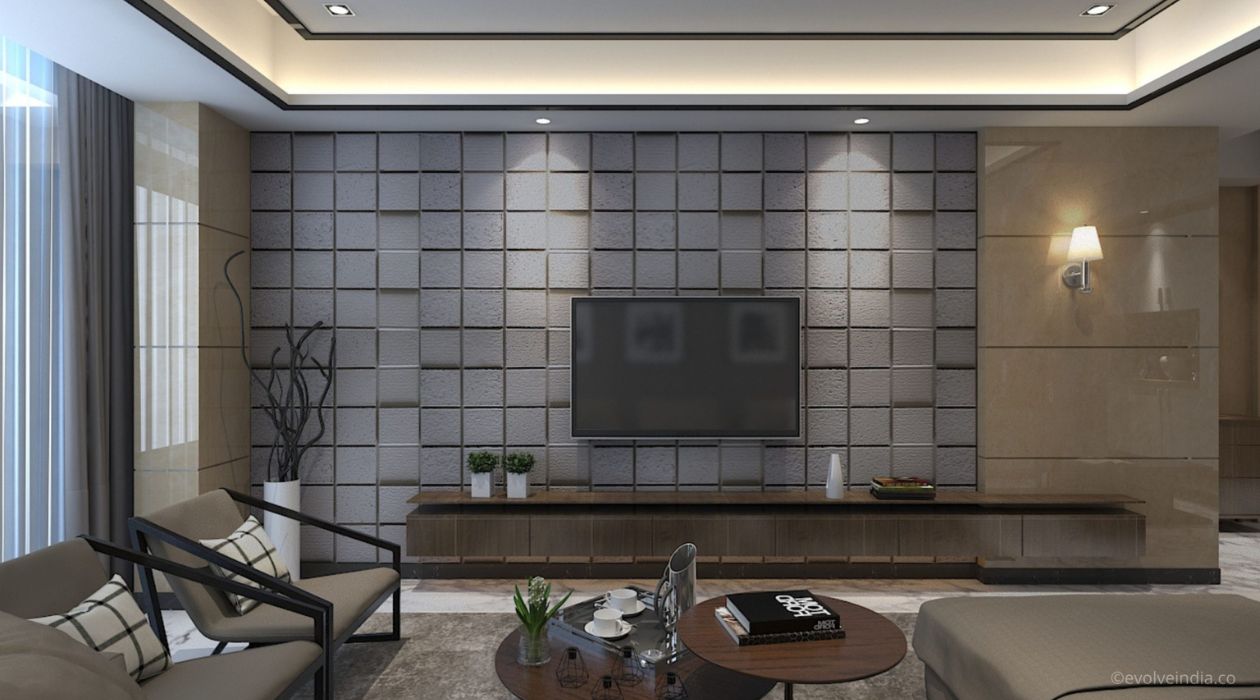
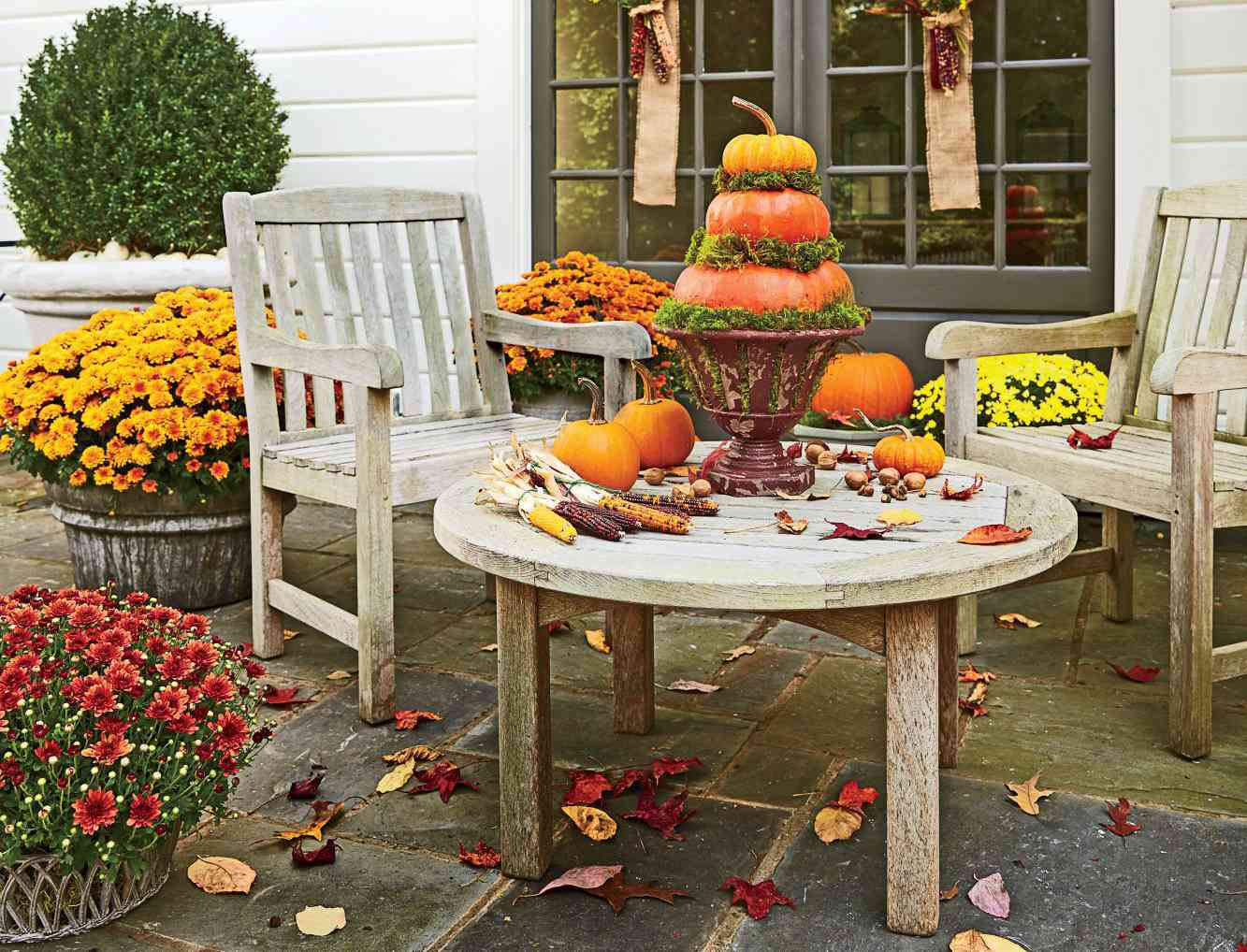
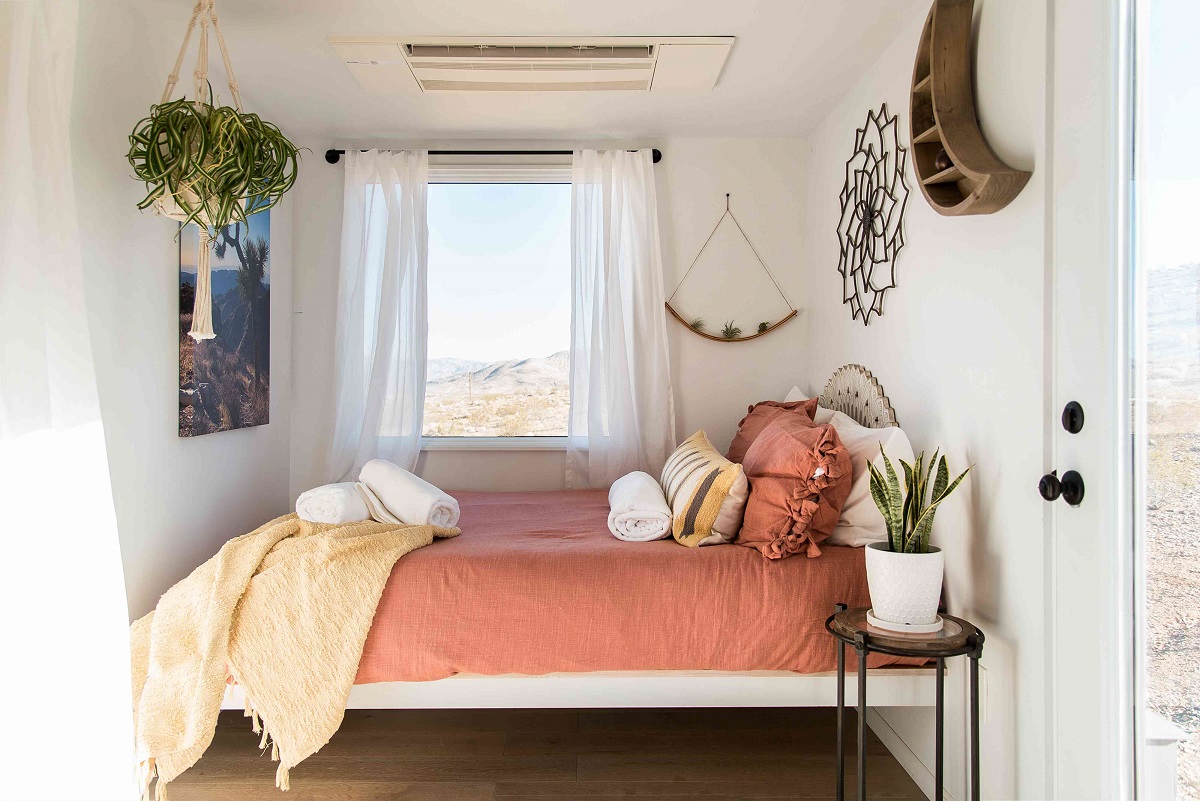
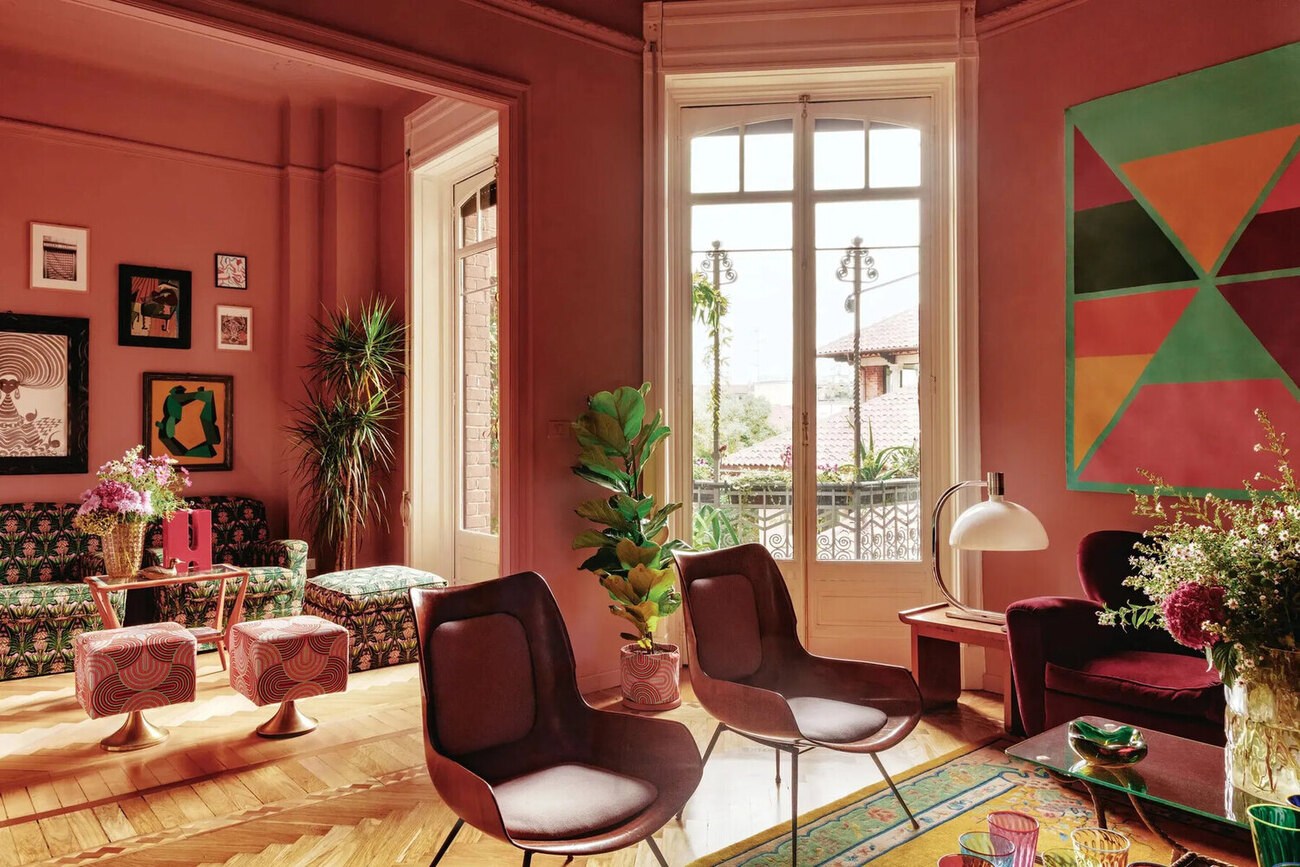
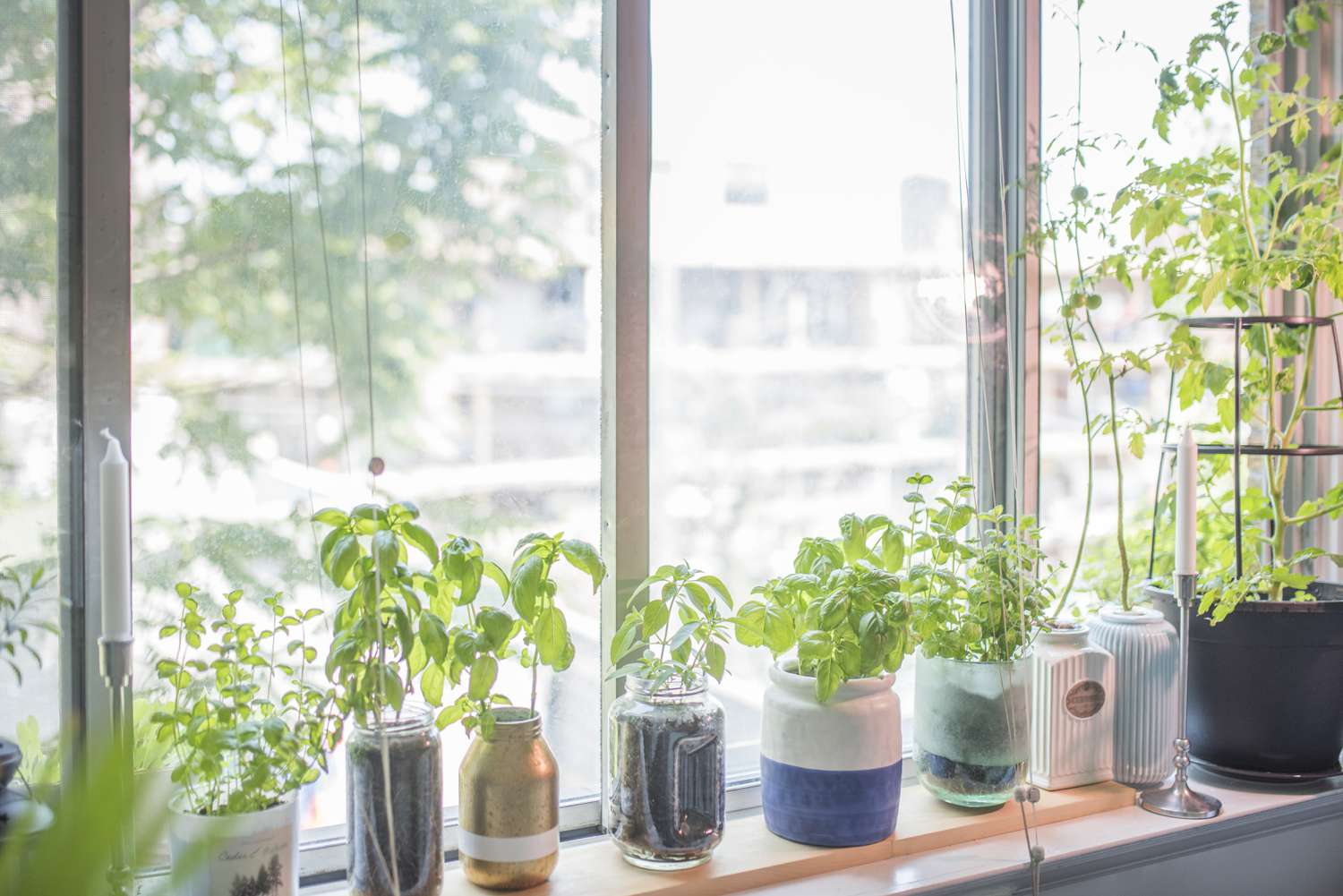
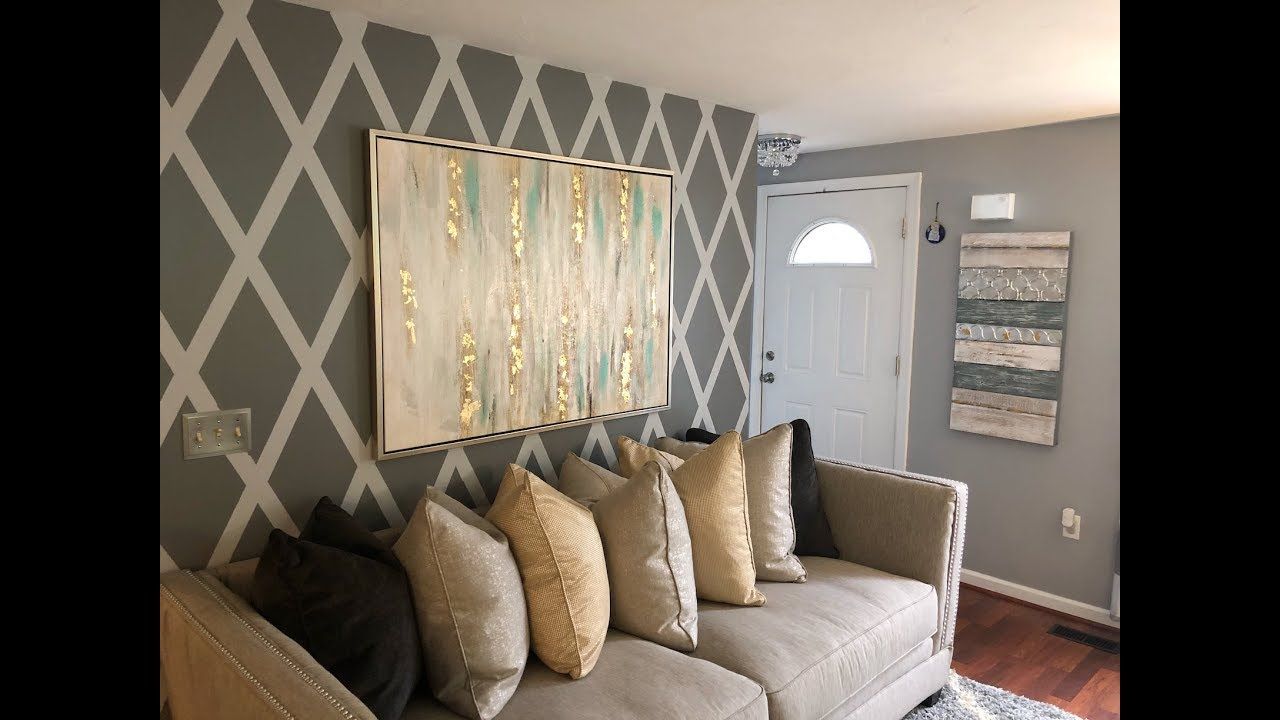

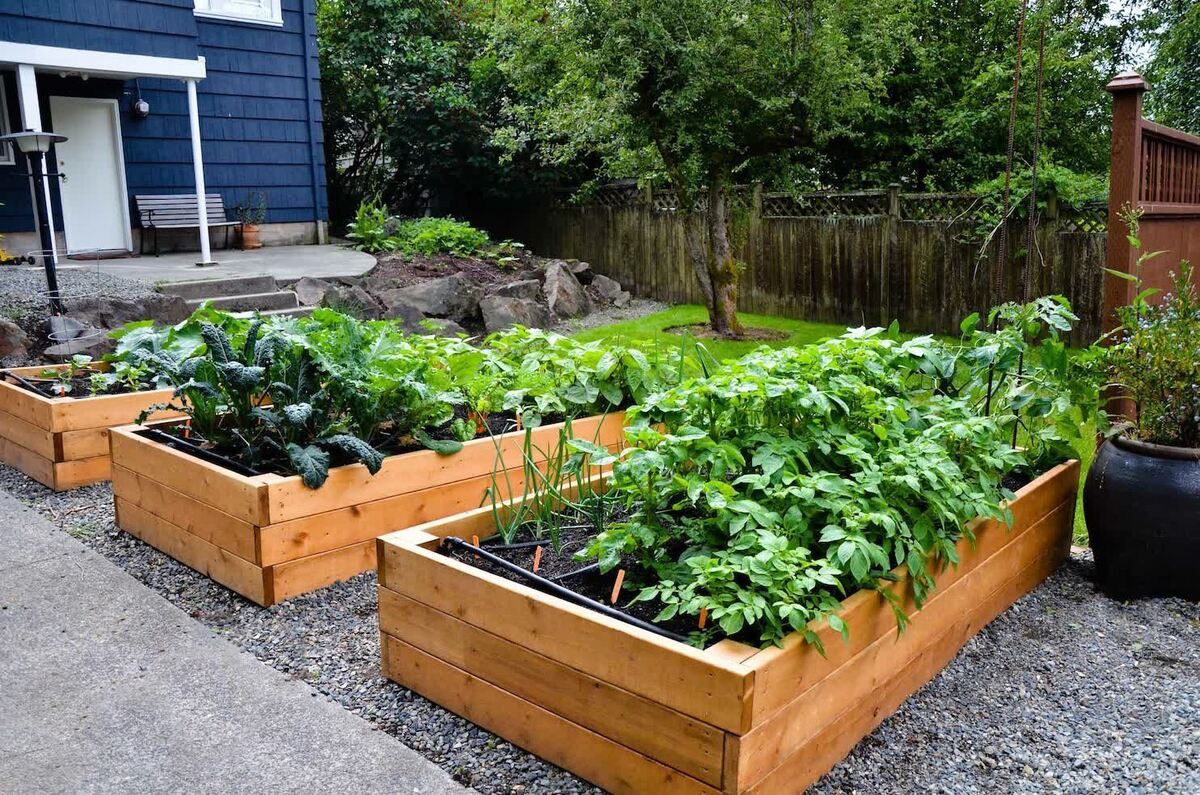
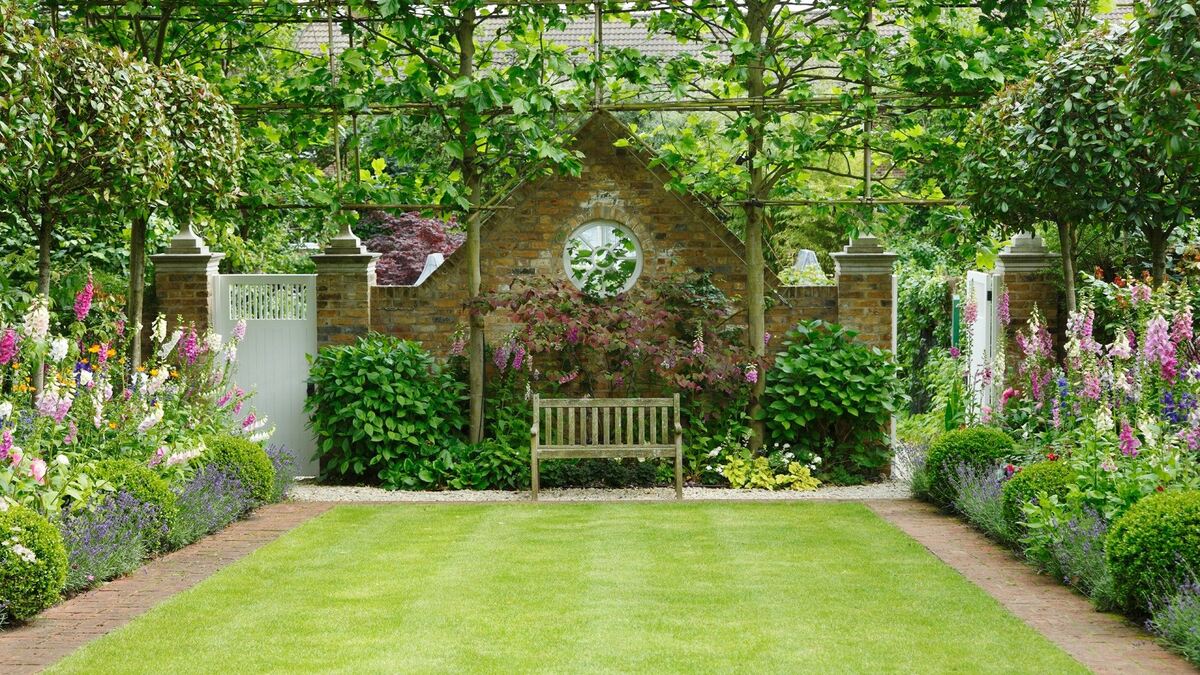
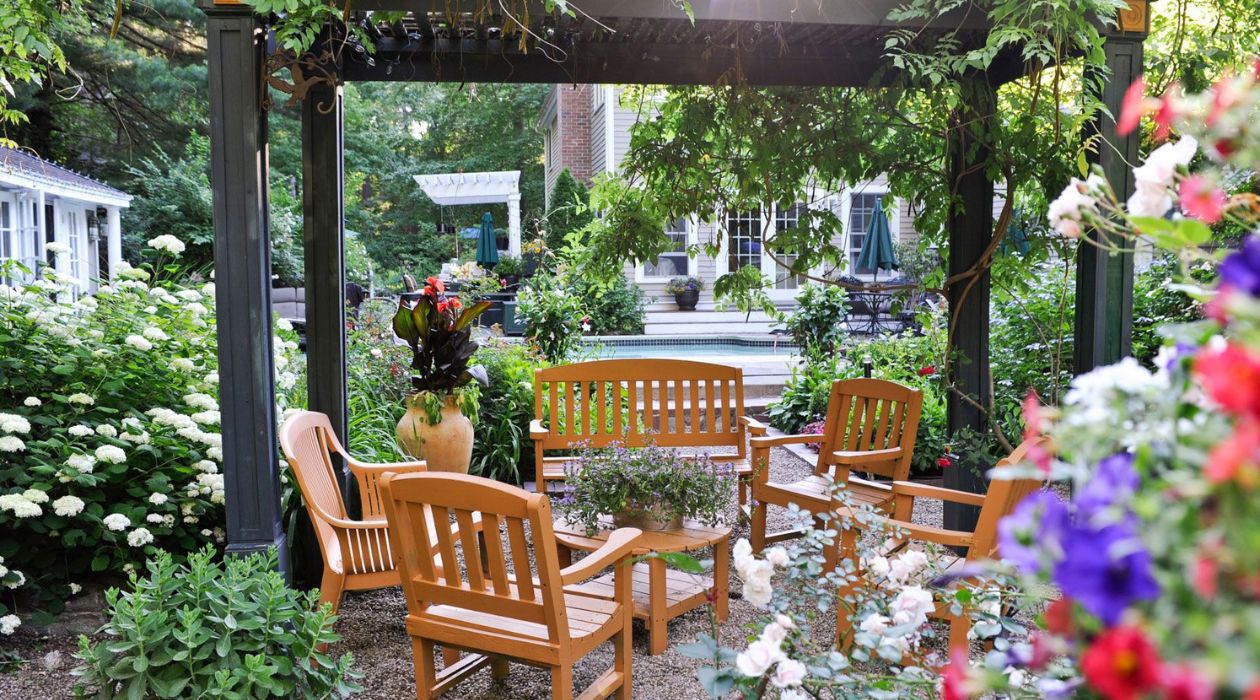
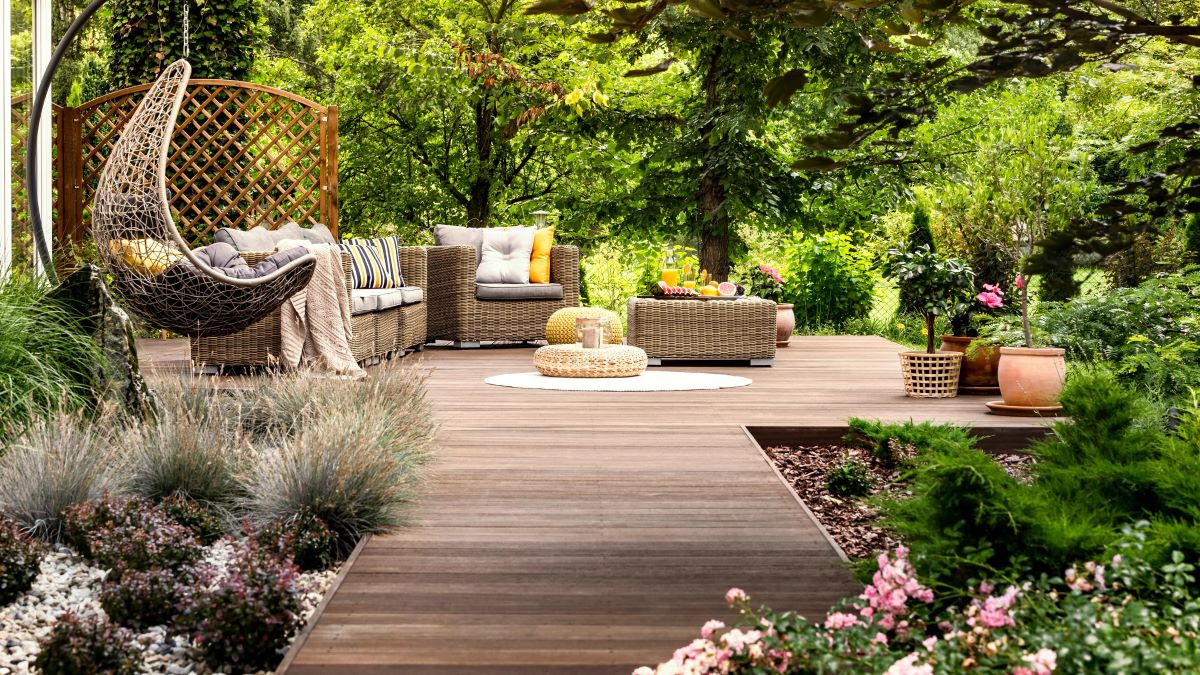

0 thoughts on “Courtyard Garden Ideas: 18 Ways Transform An Enclosed Space”